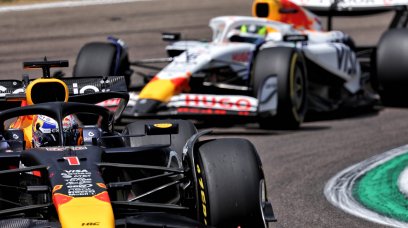International motorsport has not been seen in Shanghai since 2019, with China being largely sealed off from the rest of the world as the country sought to keep Covid cases to a minimum. Shanghai notably endured a two-month lockdown in 2022, meaning the circuit saw very little racing of any kind that year. However, with China's Covid restrictions largely having evaporated, the country has returned to some degree of normalcy. Sadly, this did not happen soon enough for Formula 1, who announced in January – just weeks before China's zero-Covid apparatus began to be dismantled – that the Chinese Grand Prix would not take place in 2023. In F1's absence, there is nevertheless a full programme of open- and closed-wheel racing taking place at Shanghai this weekend, in the form of the Open Formula Challenge and the GT Super Sprint Challenge. Though many Grands Prix feature several support events before the F1 cars take to the track, the only regular undercard act at the Chinese Grand Prix has been the Porsche Carrera Cup Asia, meaning less rubber will be laid down during the course of the weekend. Shanghai's April weather is notoriously changeable, with the 2017 race beginning in wet conditions before drying later. However, the weather forecast for this weekend predicts dry conditions from Friday to Sunday, with highs of 26 degrees. That would play into the hands of Red Bull, whose formidable DRS would be put to great use on the back straight immediately following Turn 13. At 1.170km long, this was the longest straight on the F1 calendar, so Red Bull's straight-line speed advantage should help either Verstappen or Perez secure pole position. Indeed, the nature of Turn 13 – a tight right-hander that gradually opens before feeding into the straight – would also suit Red Bull's RB19, whose effective rear end means Verstappen and Perez are invariably able to open the throttle sooner than their rivals.
A mix of all three circuits plays into Red Bull
Each sector in Shanghai takes a characteristic from the three races held thus far in 2023: Bahrain, Saudi Arabia and Australia. At the heart of Sector 1 is the long, winding Turn 1-4 complex. This is perhaps most similar to Bahrain's Sector 2, and the tricky downhill braking zone of Turn 11 with excellent traction at both tracks. Red Bull's rear end is so strong this year owing to rear suspension change that prevents the car from diving forwards under braking, maintaining a consistent aero platform, allowing Verstappen and Perez to get on with things. The high-speed sweeps of Sector 2 resemble Jeddah in the final sector, with that long straight and DRS zone also playing into the Red Bull's strengths, especially when that flap is opened. The only limiting factor for Red Bull would be reliability. We know their car suffers from teething issues owing to the compact and 'no compromises' aero set-up, and the team never did find out what the problems were with Verstappen during the Saudi Arabian GP.
But what of the rest of the field?
Mercedes' resurgence in Melbourne was brought about by the cool track conditions and smooth nature of the circuit. As we previously highlighted, it is forecast to be hot in Shanghai this weekend and the track surface is not what would be called one of the smoother ones around. It is likely Pirelli would have gone with similar tyre choices to Bahrain, electing to bring the C1, C2, and C3 range of compounds to denote Hard, Medium and Soft respectively. Hamilton has previously stated that the W14 suffers from "balance limitations" on the harder compound tyres , and with the abrasive surface in Shanghai it's likely this would manifest in qualifying and the race. However, Mercedes are good at finding time between practice sessions, so that would probably be a factor in their weekend chasing lap time. Ferrari have the pace over one lap to be nipping at Red Bull's heels , but as Charles Leclerc showed in Bahrain by saving an extra set of Soft tyres, they still have problems with tyre degradation. In the race it is likely that they would be in a battle with Mercedes for the final top five positions, although the top speeds they have shown in the opening races might just put them in the running for a final podium spot if everything went well in qualifying. Much like Red Bull, they would also have reliability as a limiting factor given that Leclerc is now at the limit or over on some power unit components and Carlos Sainz is also on two out of his allocation. The mix of Hard compound tyres and relatively cool temperatures would play into the hands of Fernando Alonso and Aston Martin to achieve another podium. Although the AMR23 lacks in straight-line speed, it would likely make up lap time in the crucial first and middle sectors. Mercedes engines have unusually experienced poor reliability, with three retirements in the opening three races – would Alonso be next in the unlucky dip? We expect places like Monaco and Hungary (20 years on from Fernando Alonso's first win...) to be where Aston Martin could really excel. That being said, with Ferrari continuing to stumble, as well as doubt over what exactly you'll get from Mercedes, Alonso would be near that third place which has been his so far this term...
Most read







